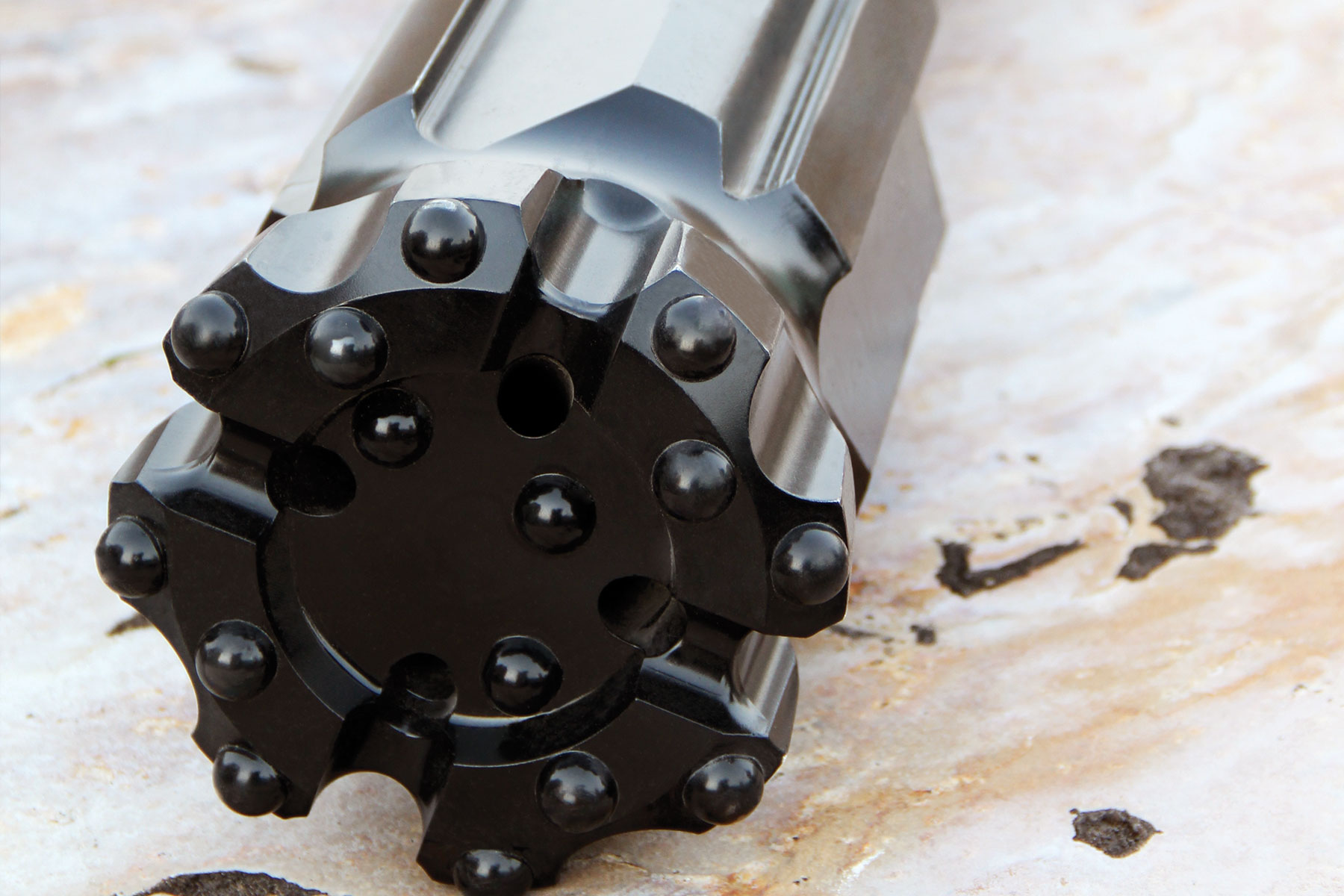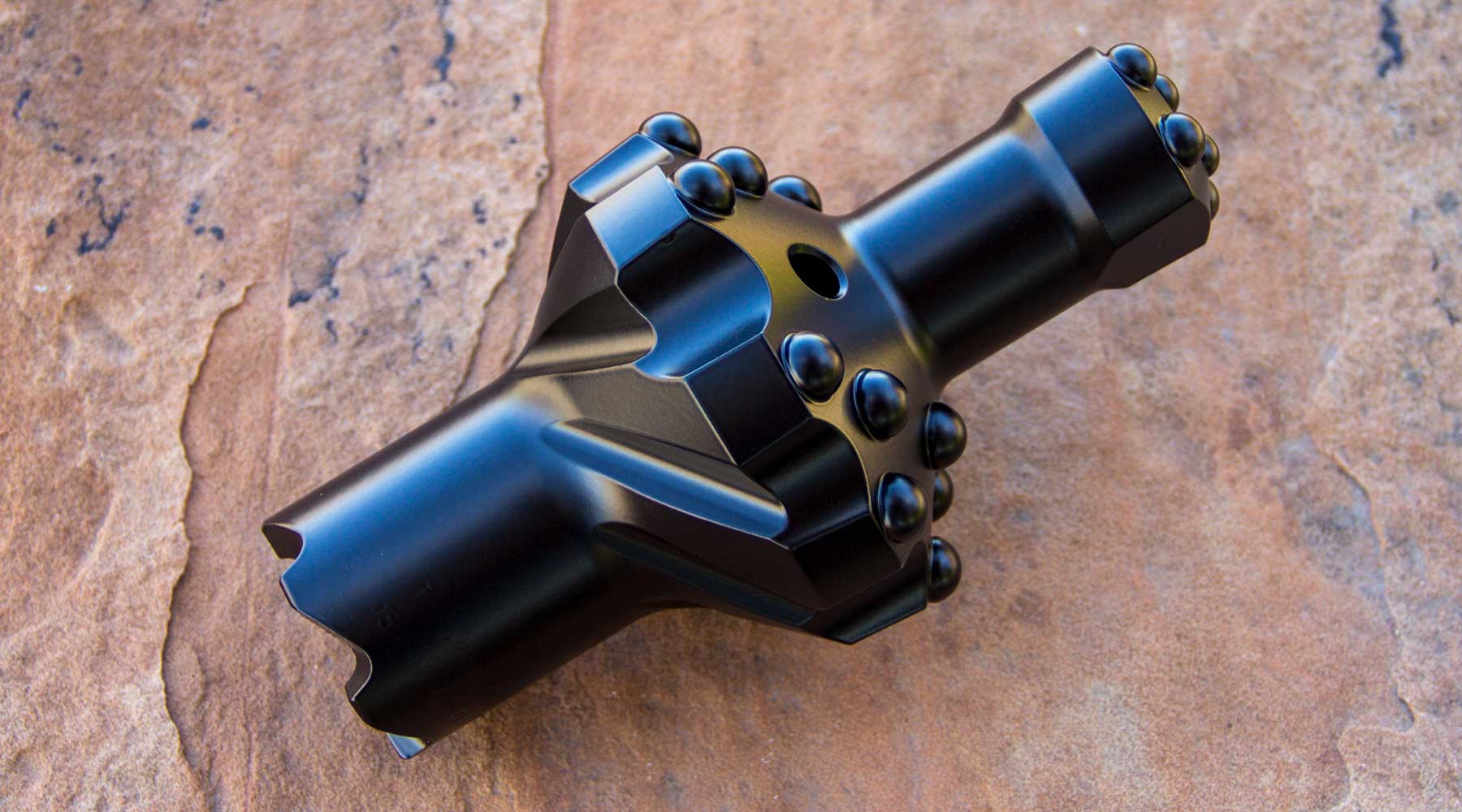OPERATING MINE
September 25, 2018
Getting more impact from top hammer tooling
Jeff Hogan, global product manager at Top Hammer Tooling (Boart Longyear), offers some advice on how to take care of drill bits for efficiency improvements.
This story was originally published in Australian Mining magazine on September 2018, page 37
To help optimize operational efficiency and protect investments, drill companies need to not only work with quality products to get the job done right, but also educate their drillers and mine management on good operating practices.
Once the right tools for the job have been determined, attention must be paid to their condition and performance. The nature of top hammer operations in extreme environments means that wear will quickly have an impact on how long various components can be used before replacement is required.
These tools represent a relatively small operational expense; however, incorrect use of the tooling can have a significant adverse impact to overall costs.

In regards to wear, bit condition will have the most immediate impact on drilling success. Drilling with worn bits not only decreases productivity but also escalates costs by reducing the life of the drill string components, the rock drill, and the rig components. Over time, direct contact with the rock and the extreme energy being applied to the tooling takes its toll on the bit and its buttons, making their condition deteriorate.
There are many factors that contribute to premature bit wear, whether it’s ground conditions, risky drilling practices like hole collaring, excessive feed pressures, or not maintaining equipment correctly. Premature bit failures are substantially reduced when over drilling is eliminated and correct sharpening practices are followed.
Here are a few things to consider to keep energy utilization optimized and to get the most out of top hammer tools.
Understand the ground conditions
If drilling through abrasive materials such as sandstone and quartzite the wear tends to be greater on the bit circumference. Drillers should consider bit replacement or restoring the gauge button-to-body gap to original (new) condition.
When drilling in non-abrasive materials, carbide wear is minimized and drilling intervals are possibly longer. This allows for continued chip removal around the bit and wears away the bit body quicker than the carbides also referred to as body wash.

Similar wear occurs in fractured and loose formations where constant hole cleaning and re-drilling of the materials is required for stabilizing the hole and to keep the hole open during retraction. To prevent button loss or shearing under these conditions, the protrusion should be reduced to the original height by scheduling grinding intervals.
Learn from your manufacturing representative
To use top hammer tooling effectively and get the most life out of tooling, it is recommended to work with a technical representative. A good technical rep will help establish specific guidelines for maximum suggested life of the bits.
To purchase the most advanced and reliable top hammer tooling, look for companies that have developed the tooling over decades of experience and continue to improve the products they offer.
Take some time to properly train crew
It is always important to care for and maintain tooling and equipment. Consider training and regularly reminding drillers on how to get the most life out of top hammer equipment. More often than not, drillers come to work to do their very best and everyone wants to improve. Share these tips and top hammer drilling productivity will increase.
KEEPING YOUR TOOLING IN TOP SHAPE
Download the full guide Keeping Your Tooling in Top Shape to read more about bit wear patterns, product servicing, and best practice recommendations.
DOWNLOAD
DISCUSSION
-
Amazing things here. I am very happy to peer your post.Thanks so much and I am looking forward to contact you. Will you kindly drop me a mail?




